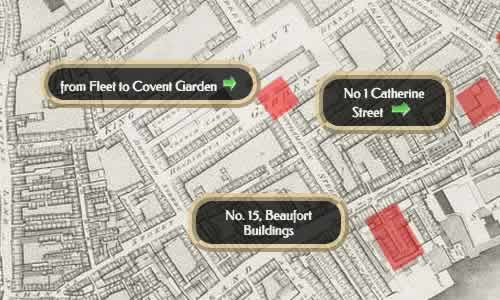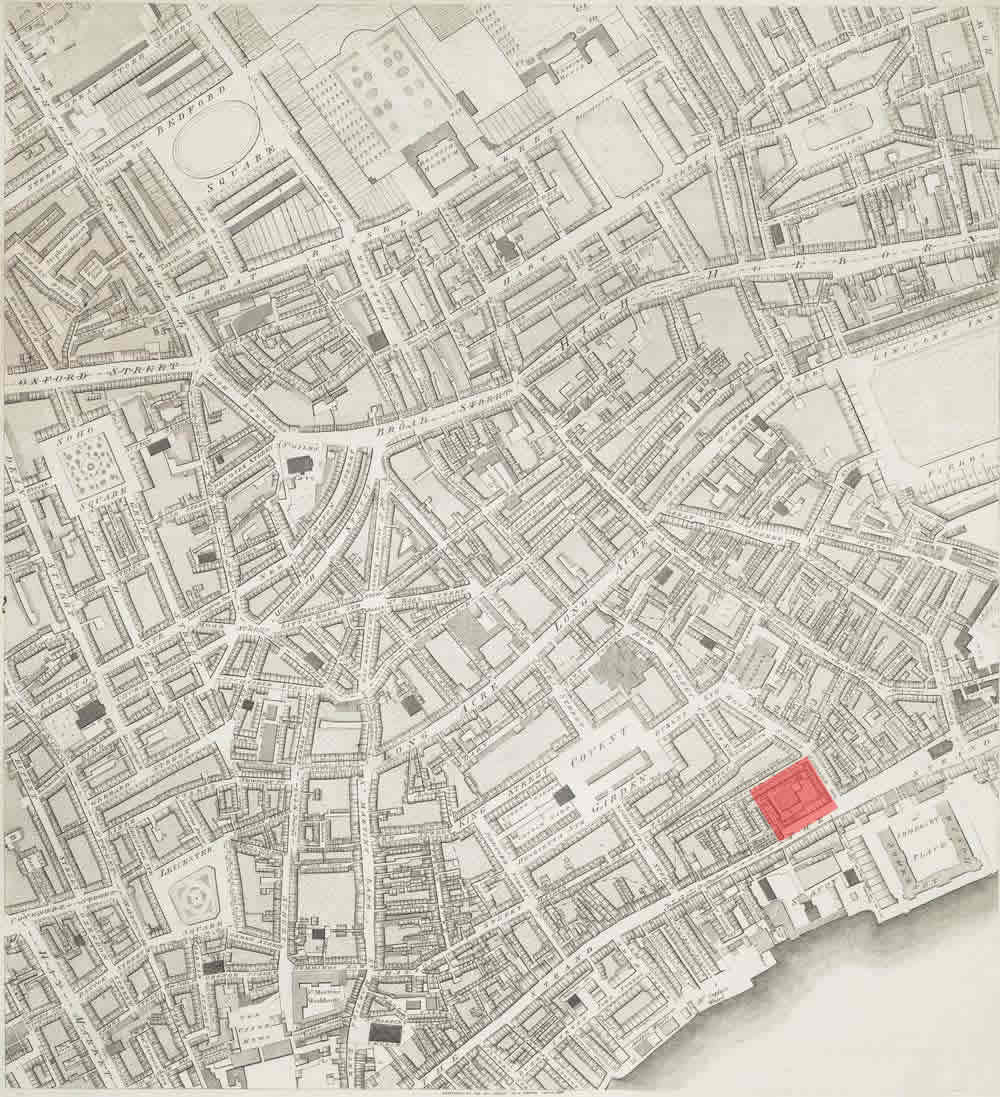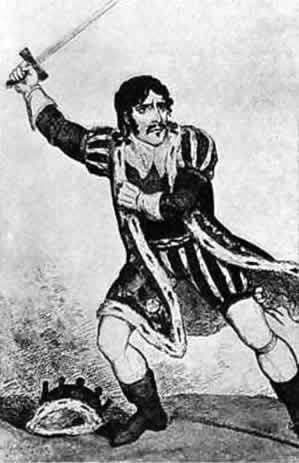21 December 1817: Keats as Kean, Kean as Keats, Endymion as Filler


Offices of The Champion. On this day, Keats, subbing in for his good friend John Hamilton Reynolds, publishes a theatrical review for The Champion on the legendary actor Edmund Kean in the title role of Richard III, though Keats draws on Kean’s other performances and roles.
John Scott is editor of The Champion (first published in January 1814), which is known
as a liberal-progressive reviewing paper. Scott goes on to become the editor of London Magazine in 1820. In February 1821 (the same month Keats
dies), Scott is killed in a duel that evolves hostilities between himself and writers
for
Blackwood’s Edinburgh Magazine, and in particular, John Gibson Lockhart, who earlier publicly (though
anonymously) ridicules and condemns Leigh Hunt and
the Cockney School,
and then, also, Keats and his poetry. (See 16 February 1821 for
more on the duel’s context.)
Keats’s connection with the magazine mainly comes via Reynolds, who writes criticism and poetry for the paper. Reynolds writes a positive review of Keats’s 1817 Poems for the magazine. The magazine also publishes some of Keats’s poetry, including On the Sea (17 August 1817) and, more importantly, On Seeing the Elgin Marbles and To Haydon with a Sonnet Written on Seeing the Elgin Marbles (9 March 1817); the Elgin marble poems are published in The Examiner on the same day.

Coming to terms with Kean’s acting style is highly
significant for Keats. Keats describes Kean as uncannily focusing on voice, language,
and
elocution—on the syllable, even. The drama, in short, resides with the intensity Kean
puts
into the words; they are, in effect, the objects of his acting, Keats posits. In praising
Kean, Keats in his review turns to what he believes great poetry possesses: A melodious
passage in poetry is full of pleasures both sensual and spiritual. The spiritual is
felt
when the very letters and points of charactered language show like the hieroglyphics
of
beauty:—the mysterious signs of immortal Freemasonry!
The giveaway in this enthusiastic
and critically probing statement of course points to what Keats is attempting to fashion
through his own developing poetical character: a voice that will bear both the sensual
and the
spiritual in creating lasting beauty via physical language itself—the measured efficacy
of
those words on the page—without being overbearing or acting in excess. Again, Keats
projects
on to Kean’s dramatic style what he desires of and in his own poetry, since Kean,
according to
Keats, becomes the lines themselves—he is, at it were, the chameleon actor: Kean,
Keats
writes, has this intense power of atomizing the passion of every syllable—of taking to
himself the wings of verse.
Keats holds that Kean becomes
the thing he describes;
Kean delivers himself up to the instant feeling.
Kean becomes the subject that he
articulates. This anticipates what Keats strikingly sounds toward the end of 1818,
when he
writes that the poetical Character
is chameleon-like, in that it assumes whatever
Body
or state it takes as its subject (letters, 27 Oct. 1818).
Despite, then, having some evolving sense of the direction his poetry must take, it
will take
Keats about a year to consistently step away from poetry that either seems random
and for its
own sake, or that, at worst, wallows in unnatural poetic affectations. Endymion, the 4,050-line poem that takes up a great deal of 1817 (and represents
more or less the middle phase of Keats’s poetic development) is in fact a good example
of a
poem that, at too many moments, is overloaded with diffuse description, poetic posturing,
and
sensuality without sense or spirituality; moreover, its form—couplets—are too often
driven by
diversionary rhyme, despite being somewhat experimental. The poem seems in search
of a
subject, and does not (like Kean) with gusto embody the subject that it can turn and
explore.
When Keats writes that a significant part of his purpose in writing Endymion is to see if he can make 4000
lines of one bare circumstance and fill them with Poetry
(letters, 8 Oct 1817), we are
entitled to say that the poem is not much more than filler. Toward the end of drafting
the
poem, Keats is greatly aware of its deficiencies; such awareness is a good thing.
Keats writes reviews for The Champion in December 1817/January 1818.

